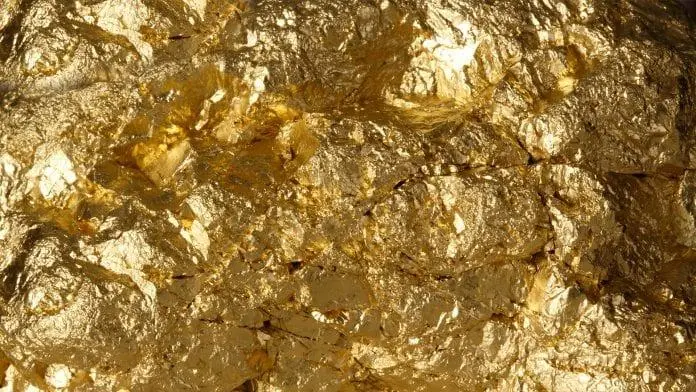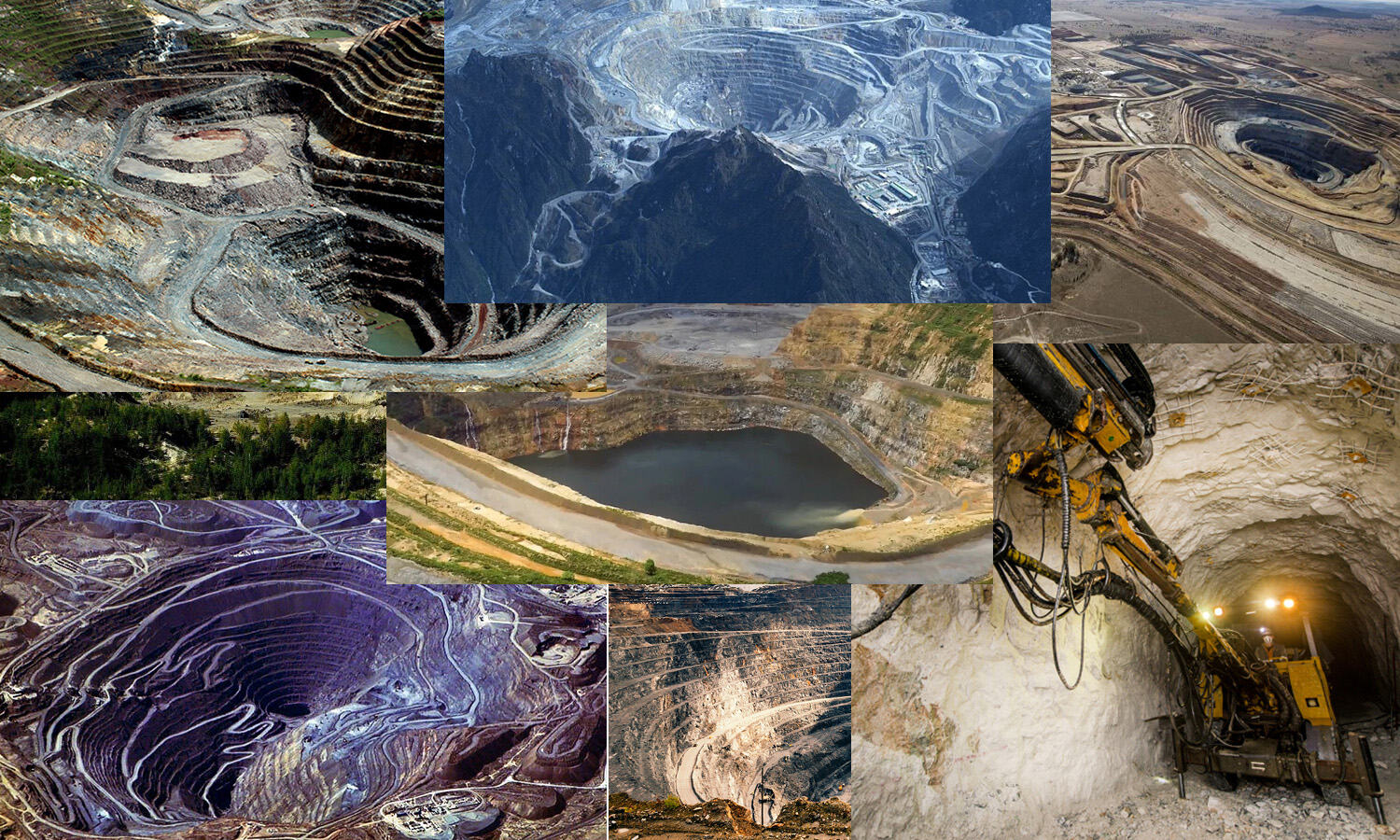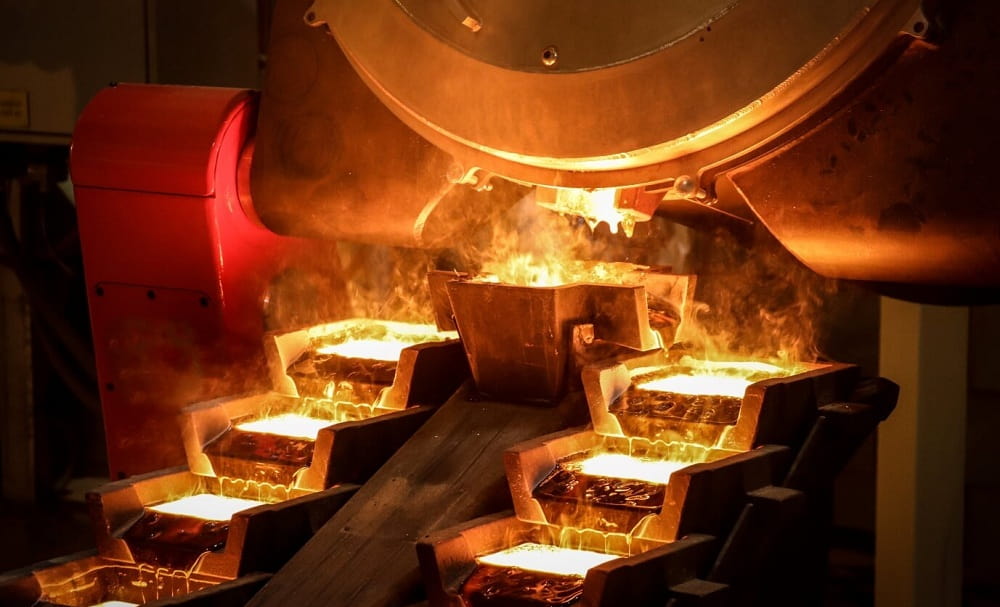
Together, the world’s 10 largest gold mines produced nearly 337 metric tons (MT) of the yellow metal in 2022.
According to the most recent US Geological Survey data, global gold production totaled 3,100 MT in 2022. The 10 largest gold mines accounted for more than 10 percent of this output, and perhaps unsurprisingly half of these mines are located in four of the world’s top gold-producing countries: Russia, Australia, Canada and the US.
Major miner Barrick Gold (TSX:ABX,NYSE:GOLD), the world’s second largest gold-mining company by production, holds at least a partial interest in four of these mines: Nevada Gold Mines (61.5 percent) in the US; Kibali (45 percent) in the Democratic Republic of the Congo (DRC); Pueblo Viejo (60 percent) in the Dominican Republic; and Loulo-Gounkoto (80 percent) in Mali.
What were the top 10 largest gold mines by production in 2022? The list below was compiled by the team at Refinitiv, a leading financial markets data provider. Read on to learn which operations made the list.

Nevada Gold Mines is the largest gold-mining complex in the world, producing 68.5 percent more of the precious metal than the next largest gold mine on this list. The operation is a joint venture between Barrick and Newmont (TSX:NGT,NYSE:NEM), the world’s largest gold-producing company, which has a 38.5 percent stake in the asset.
Nevada Gold Mines encompasses several prolific gold deposits, including Carlin (48.9 MT produced), Cortez (22.8 MT), Turquoise Ridge (14.26 MT), Phoenix (5.5 MT) and Long Canyon (2.8 MT). The gold-mining complex has combined proven and probable reserves of 29.6 million ounces, and measured and indicated resources of 49 million ounces. As its name suggests, it’s located in the top US gold-mining jurisdiction, Nevada. The US ranks as the world’s fourth largest gold-producing country.
In keeping with its Greenhouse Gas Reduction Roadmap, Barrick is building a 200 megawatt alternating current photovoltaic solar facility to accelerate its decarbonization program.
Production: 55.9 MT

The Grasberg mining district is located in Indonesia and is the second largest gold mine and second largest copper mine in the world. The majority of the asset is owned by Freeport-McMoRan (NYSE:FCX), the ninth largest gold-mining company by production.
Grasberg consists of the Grasberg block cave, the Deep Mill Level Zone (DMLZ) and Big Gossan. Daily production at Grasberg reportedly amounts to approximately 5 million pounds of copper and 5,000 ounces of gold. Freeport-McMoRan’s subsidiary PT Freeport Indonesia is undertaking long-term mine development activities at the Kucing Liar deposit in the Grasberg mining district, which the company says has the potential to produce over 6 billion pounds of copper and 6 million ounces of gold between 2028 and the end of 2041.
Production: 32.5 MT
Olimpiada is an open-pit operation that has been in production since 1996. It is located in Russia, which tied with Australia as the second largest gold-producing country in 2022. The mine is owned by the fifth largest gold-mining company by production, Polyus Gold (LSE:PLZL,MCX:PLZL).
Olimpiada holds proven and probable reserves of 21 million ounces of gold, and measured and indicated resources of 48 million ounces. The ore mined at the site is processed at three plants with a combined capacity of 14 million tonnes of ore annually. Polyus is forecasting that production at Olimpiada will increase in 2023 as higher-grade ore is expected to be processed following the mining of rich gold-bearing zones in the Vostochny pit.
Production: 24.8 MT

The Boddington gold and copper mine is one of the largest gold-producing mines in Australia. The mine has been in operation since 2009 and is wholly owned by Newmont.
Looking forward, strong production at Boddington is expected to have a significant impact on the stability of Newmont’s total gold output for 2023. However, the company reports that “(b)ased on mine sequencing, gold production is expected to decline in 2024 and 2025 due to lower grade ore and stripping in the South pit.”
Production: 23.3 MT
The Kibali gold mine is comprised of both open-pit and underground operations located in the DRC, which is quickly gaining ground as an important gold-mining jurisdiction. Africa’s largest gold mine and the world’s fifth largest gold mine, Kibali is a joint venture between Barrick and AngloGold Ashanti (ASX:AGG,NYSE:AU) — which both have a 45 percent interest — and the DRC’s state miner Sokimo at 10 percent. The mine commenced production in 2013 and is operated by Barrick.
Kibali holds proven and probable gold reserves of 4.6 million ounces and measured and indicated gold resources of 7.1 million ounces. In March 2023, Barrick reported that “(f)or the fourth successive year, exploration more than replaced the gold that Kibali mined in 2022, extending the mine’s Tier One production profile to 2033.”
Production: 22.2 MT
Pueblo Viejo is located in the Dominican Republic, where it is responsible for nearly 50 percent of the country’s gold production. In operation since 2012, the gold mine is run by Pueblo Viejo Dominicana, a 60/40 joint venture between Barrick and Newmont.
Work at Pueblo Viejo is ongoing to convert 9 million ounces of measured and indicated resources to proven and probable reserves in an effort to extend the mine’s life to at least 2040.
Production: 21.8 MT

Lihir is a gold mine located on Lihir Island in Papua New Guinea. It was acquired by Newcrest Mining (ASX:NCM,OTC Pink:NCMGF) back in 2010 as the result of a merger with exploration company LGL. In 2022, Newcrest ranked as the eighth largest gold company by production. Newmont, the top gold-producing company, recently made a US$19.5 billion bid for Newcrest.
Lihir holds proven and probable gold reserves of 22 million ounces, and measured and indicated gold resources of 42 million ounces. In a recent investor presentation, Newcrest states that “Lihir is entering its high grade phase,” with the mining of the Kapit orebody set to begin in the 2026 fiscal year.
Production: 21.3 MT
In production for nearly two decades, the Loulo-Gounkoto gold mine in Western Mali is an important contributor to the country’s economy. Barrick has an 80 percent interest in the complex, while the State of Mali holds the remaining 20 percent.
Barrick says that a third underground mine at Gounkoto is set to commence ore production in the second quarter of 2023. The Loulo-Gounkoto gold mine holds proven and probable gold reserves of 6.7 million ounces, and measured and indicated gold resources of 9.7 million ounces.
Production: 20.6 MT
The Canadian Malartic mine is found in the Abitibi greenstone belt of Quebec and is the nation’s largest gold mine. Quebec is Canada’s second leading gold-producing jurisdiction, and Canada itself ranks as the world’s third largest gold-producing country. Commercial production began at the open pit Canadian Malartic mine in 2011.
The project was previously a 50/50 joint venture between Yamana Gold and Agnico Eagle Mines (TSX:AEM,NYSE:AEM). Prior to its acquisition by Pan American Silver (NASDAQ:PAAS,TSX:PAAS) in March 2023, Yamana sold its stake in the Canadian Malartic to Agnico Eagle, giving its joint venture partner 100 percent control of the world’s ninth largest gold-producing mine.
Canadian Malartic is expected to produce through 2029; however, ongoing development of the underground Odyssey deposit is projected to extend its overall mine life to 2039. In February 2023, Agnico shared that it expected production at the Odyssey mine to commence in March 2023, and it said that going forward the Canadian Malartic mine and the Odyssey mine together will form the Canadian Malartic complex.
Production: 20.3 MT
Agnico Eagle Mines also holds a 100 percent stake in the world’s 10th largest producing gold mine. In 2022, Detour Lake was the company’s biggest gold-producing mine, putting out 20.3 MT of the yellow metal. The gold mine is located in Ontario, Canada, in the northernmost portion of the Abitibi greenstone belt.
Agnico reports that Detour Lake has gold reserves of 15.03 million ounces with a mine life that extends to 2042. For 2023, President and CEO Ammar Al-Joundi has stated the company’s “focus will be on optimizing and growing Detour Lake and Canadian Malartic and on establishing a plan to capitalize on existing infrastructure, including our excess mill capacity, in the Abitibi region of Quebec, with the potential to produce up to 500,000 ounces of gold per year by the end of the decade.”
Don’t forget to follow us @INN_Resource for real-time news updates!
